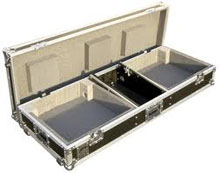
Turntable Coffins
If you are shaking your head in bewilderment when you read about turntable coffins, you are not alone. After all, who has ever heard of such a thing, anyway? As it goes, there are two things associated with turntable coffins and they couldn’t be more different if they tried. Read on to find out more.
What is It Exactly?
The original turntable coffins were based on a mechanism that could rotate up to seven coffins within a circular building. These buildings were equipped with thick studded wooden doors with a matching iron inner door. The first coffin is gradually moved towards the inner containment unit while newer ones were being added. This circular motion gave the contraption the term turntable coffins as they are methodically rotated to prevent corpse theft.
The Origin of Turntable Coffins
Back in the early days of medical science, tomb raiding and grave robbing had become a disturbing activity in some areas of Scotland, and most notably, in areas that were near any anatomy or medical schools. Because the bodies being taken were being used to further medical studies, most authorities turned a blind eye to these incidents. Because of this, families had to stand guard at newly dug graves to ensure that their dead would not be exhumed and used for experiments and studies. Wealthier families could afford heavy tabletop headstones or place the corpses in vaults and mausoleums to prevent body theft. Another device built to counter grave robbing of this nature was the mortsafe. This consisted of a plate and rods that were pushed into holes in the coffin and secured with a lock. This could only be removed after six weeks by the two people who were safeguarding the keys for the lock. The mortsafe would then be used for the next coffin that would be buried. The invention of turntable coffins came about shortly after this, as a type of safe house for corpses. The turntable coffins were very rare even back then and could only be found in a few places as it was quite elaborate and needed a lot of space. Bodies would be removed from the turntable once they were deemed no longer fit for dissection and thus can be given a proper burial.
